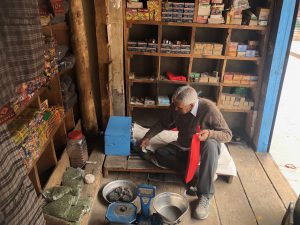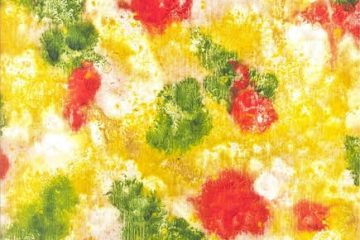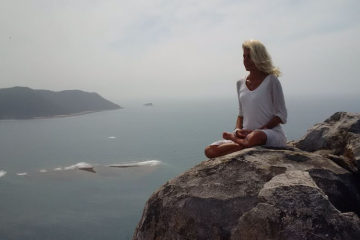SHAMBHALA retreat 24-30/09/22 in the Himalaya: tribal visits
September 2022, Shambhala retreat 2022 in the Himalaya
Our intention was to spend some time with a tribe of pure Aryans in India. Trek in the Himalayan regions of the Aryan Valley in search of a tribe called Brok-Pa = Aryan (Ladakhi word for Aryan or white skin. In these Brok-Pa villages, the natives are direct descendants of my countryman, Alexander the Great, the Ancient Greek Emperor that came to India with the mission to unite the East with the West.
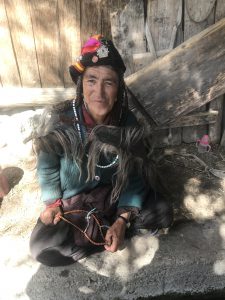
There are about 1,000 descendants of the Aryan tribes. They live scattered around Gilgit, Hunza, Kargil and Leh. Despite living in small rock shelters and in very low temperatures during the winter (around -20 in January) they are very happy. Their striking features include blue eyes, aristocratic noses, fair complexion and flawless skin. They appear ethnically distinct from Ladakhis or Kashmiris.
The Brok-pa tribal people are devoted Buddhists. They go to the Temple, they have a shrine in their houses with Buddha’s statue and sacred books, and chant and pray in the morning, in the evening, pray before meals, help each other in a compassionate way.
The Aryan tribes believe in prophecies and the recording of dreams. Most of the elderly Aryans meet in the morning at the Juniper grove and discuss their dreams. There are an unusually large number of Aryans above 70 years and they are are all active even at 90. Older women are taking caring of the babies.
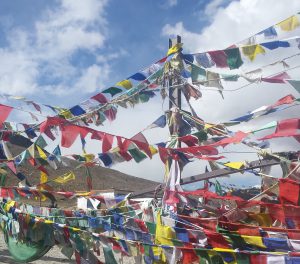
Music and dance are a way of life for them. Both men and women wear colourful costumes, decorating their hair with flowers and wear hats with flowers, and are easily smiling. They live in close contact and harmony with the nature, and are cheerful and stress-free. They love Mother nature, they celebrate the Bononah (“nature”) festival.
They have white skin, unlike, the rest of the Ladakhi people, and they don’t mix with other tribes, they ’re racially pure. They do not marry thus outsiders generally. Restricting their contact with the outside world, they seem happy in their isolated existence. Married women braid their hair, which gives them a resemblance to Greeks.
They trek long distances. The few thousand Brok-pa Aryans have over 5,000 years lived in these landscapes at 15,000 ft altitude, subsisting on a vegan diet. They are vegetarians. Some of them they are not only strictly vegetarians but also don’t consume milk or dairy products. They are strict vegans. Almonds, barley, apricots and walnuts form part of the diet along with black tea fortified with barley flour (chamba). Their meals consist of jo (barley) baked roti in the oven, roasted potatos, spring onions, lettuce leaves, cauliflower, apricot jam, wild mint etc. Women cook in their kitchen that is the main room of the house uniting many generations, or in an open hearth, burning fallen twig collected from the trees in their courtyard. The meals are simple but fresh coming right from the garden and delicious.
VISITING THE BROK-PA
We started our jeep safari at 7 a.m. The 130-km drive passes through the villages of Khalsi, Dumkhar, Skurbuchan, Achinathang etc. We crossed several high peaks before reaching Beema (14,350 ft). The landscapes resemble a picture postcard and compensate the seven-hour drive over rugged terrain.
The first glimpse of the Indus, from miles away, is a near-spiritual experience. A sacred stream with turquoise crystal clear waters. Arriving at Beema we can take a cold bath to purify our beings in the pure waters of this river. The tranquility experienced while meditating on its banks, is indescribable.
We visited the villages of Hanu, Dah and Beema (pronounced Beama). A trek can take place first into the villages of Beema and Dah and then of Hanu.
Some of the more inaccessible pockets can be reached only through trekking. The next morning, we do a trek to reach the next village of Dahanu.
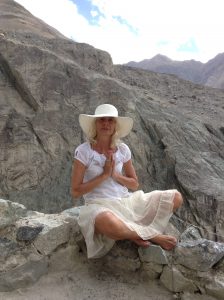
The landscape changes and a canopy of green can be seen. The barley fields are full of barley, ready to be harvested. Walnut and apricot trees are stretched across the horizon. Apricots are everywhere, sweet, organic, delicious. The staple food in the Aryan valley is barley, grown in terraced fields and irrigated by the mountain streams that rush to meet the Indus flowing below. The ascent is rather steep and the altitude nearly 17,000 ft. We keep our body hydrated by drinking the fresh, cool, natural mineral water of the mountain streams.
After Dahanu we reached the village of Hanu with the ancient juniper trees by noon and give a big hug to the trees to soak in their energy. Visiting some of the elderly Aryans was a heartful experience. The children of the tribe in Hanu village are welcoming us and guide us through the streams, the fields and the stoned houses.
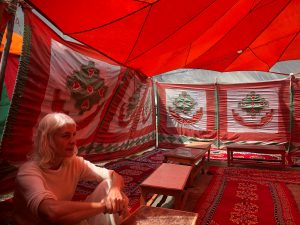
After our meditation we visited the Buddhist monastery of the village. The monks along with local people are chanting when we enter. We stay in silence listening with solemnity feeling our hearts opening and more light entering from our heart chakra. They invite us to eat lunch with them. We share a delicious vegetarian lunch cooked by the women of the village. They don’t speak english so we use body language to communicate. One of the monks fortunately can speak a bit of english explaining some of the rituals and telling us that there is a prohibition of not consuming alcohol in the Brok-Pa villages. So everybody is drinking tea. Before it was black tea, now it’s mostly tsai (milk tea with cinnamon, cardamon and other spices) or butter tea (tea with ghee and salt)
We thank the monks and the smiling hosts for their hospitality promising to come back soon☺
